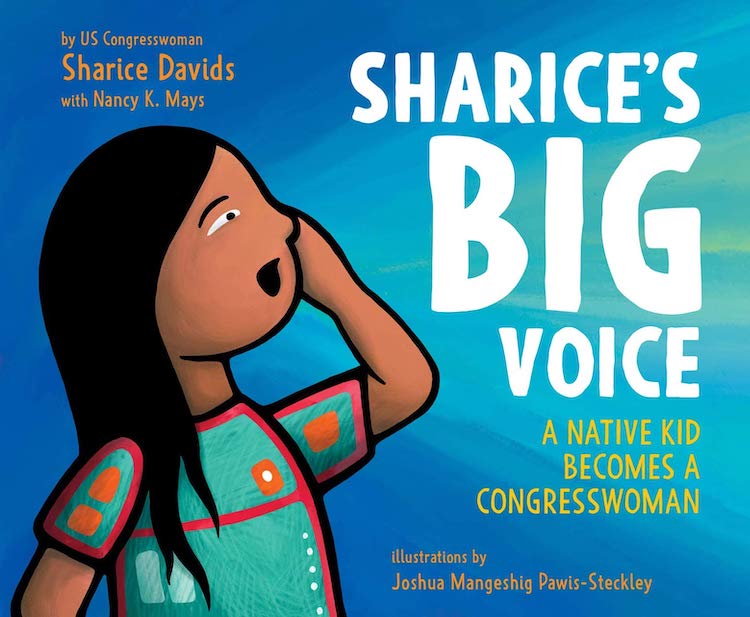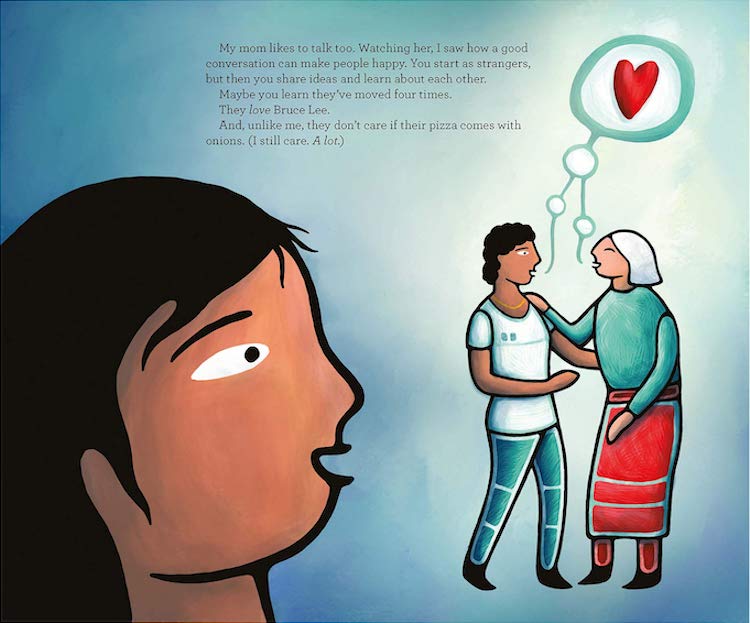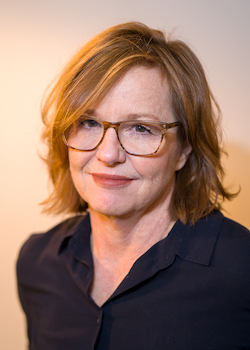As Nancy Mays (MFA ’17) volunteered for U.S. Rep. Sharice Davids’s (BBA ’07) campaign, Davids mentioned that she had always wanted to write a children’s book.
“She wasn’t thinking about herself,” Mays says. “She had a vision for a series of books that would introduce kids to civic responsibility with stories of how to do your part. But Sharice has such a great personal story. I thought we should start there.”
While Mays knew a lot about Davids’s life growing up with a single mother, she was interested in what she was like as a child. She interviewed Crystal Herriage (BA ’17), Davids’s mother, and went through old pictures with her for background information. With both women’s stories in hand, Mays, who is a professional writer and writing instructor, began to develop the narrative arc of the book.

“It was different writing a children’s book,” she says. “You really have to scale back your language, and that was more challenging than I thought it would be. You have fewer number of words on a page, and have to consider the type of words. But you still need to develop the voice, include all the information that is important to the editors and be true to the person’s story. It was a fun challenge.”
“We wanted to tell the story in a way that would show kids that life didn’t need to follow a script.”
Mays and Davids, who is Native American and a member of the Ho-Chunk Nation, also agreed it was important to find an indigenous artist to create the illustrations.
“We really wanted the illustrations in ‘Sharice’s Big Voice; A Native Kid Becomes a Congresswoman’ to capture the energy and vibrancy of Sharice’s childhood and Joshua [Mangeshig Pawis-Steckley] has really done that,” Mays says. “He was open to the collaborative process. There’s an illustration where Sharice is going to start campaigning an,d he drew it with her at the front of a group of people. Sharice asked him to redraw it. She said, ‘That’s not my style of leadership.’ And it made sense to him. He drew it again with her in the middle of the group.”
Similarly, the first sentence of the book mentions Davids’s mother, who raised Davids on her own. It’s accompanied by an illustration of the two of them together on election night surrounded by other people.
“When I received my first copy of the book, I showed it to my mom,” Davids says. “She knew what stories would be in the book, but when she opened it to the first page she said, ‘Oh! I’m in here.’
And it was interesting because the story of my life is so informed by the type of person she is – her supportive nature, her big heart and her fortitude. She’s is both the toughest and most kind and gentle person I know. It didn’t cross my mind to have it play out any other way.”

Herriage said it felt special that her daughter would include her in the book.
“Children see certain memories with different eyes than adults,” she says. “When she showed my promotion ceremony to Sergeant First Class in the Army in the book, I was so happy that we both saw it as a special family moment years later.”
Herriage thinks Davids revealing that she was a “chatterbox” as a child, who learned to listen as well as talk, may be helpful for her readers.

“A lot of children will see themselves, and that they can be happy with their own traits, which others may not find as endearing at the time,” Herriage says.
Beyond the strength of Davids’s relationship with her mother, one of the elements of her story that Mays thought was essential to the book was dichotomy of skills that make children successful in school, and skills that make people successful in life.
“Sharice is very friendly and really loves people,” Mays says. “But when she was a kid, that meant she would get in trouble for talking in school.”
Mays and Davids thought children would be able to relate to the challenge of sitting still and being quiet.
“Another thing we loved about her story is that it took her a long time to finish her undergraduate degree from UMKC, but she did it,” Mays says.
Davids worked her way through school as a manager of a fast-food restaurant where her mother also worked.
“Sharice and I were both first generation students,” Mays says. “People don’t always realize that this is a very different experience. She and I connected over that.”
Herriage did graduate from UMKC in 2017, 10 years after her daughter graduated.
“Now Sharice refers to herself as a former first-generation college graduate,” Mays says with a laugh.
“We wanted to tell the story in a way that would show kids that life didn’t need to follow a script.”
Both Mays and Davids agreed that the book needed to end with the story of election night.
“This story isn’t about being elected to Congress,” Mays says. “That was Sharice’s dream. We wanted to tell the story in a way that would show kids that life didn’t need to follow a script. It’s much more a message of, ‘I’m going to show you how I got to where I am, and maybe that will help you figure out where you’re going – no matter what it is you want to do.’”

Davids recognizes that it matters for children to see diversity in the characters in their books.
“I wasn’t conscious as a child that there were no characters in books that looked like me, but as an adult I learned that only 1% of characters in books that are native or indigenous people,” she says. “I think that books like “Sharice’s Big Voice” featuring these diverse characters is important. But I also think it’s interesting that we call it ‘diversity.’ Because it’s not uncommon to be raised by a single mom, or to be an Army brat, or to work while you’re in school.”
Davids says she hopes that someone reading her book – a child or adult - will see that the most important thing for people to do is recognize they can try lots of different things.
“A child might read this and say, ‘I want to work with animals,’ or ‘I want to learn magic tricks.’ I wanted to show that you can try lots of different things and that's okay, because all of us have a different path.”

